Creativity and Co-Creation Bring Local Asian American, Native Hawaiian and Pacific Islander Histories to the Classroom
Through a convening of educators and community organizations, new education resources for students spotlight local histories in engaging new formats, telling stories from right in their own backyards
:focal(640x494:641x495)/https://tf-cmsv2-smithsonianmag-media.s3.amazonaws.com/filer_public/bf/c4/bfc4939e-db24-4a76-95b9-479e9481ade5/apac1.png)
Asian Americans, Native Hawaiians, and Pacific Islanders (AANHPIs) have played a crucial role throughout American history, both at the national and local levels. There has been a widespread movement to include AANHPI histories in curriculum across the nation. A growing number of states have passed legislation to mandate AANHPI history be included in K-12 curriculum (such as Illinois, New Jersey, Connecticut, Wisconsin), while other states, like Ohio and Texas, continue to organize and advocate for the inclusion of AANHPI history in their own classrooms.
During the summer of 2023, the Smithsonian Asian Pacific American Center (APAC) launched its inaugural Co-Creation Initiative cohort with help from the YURI Education Project to co-create new educational resources sharing local AANHPI histories for K-12 educators, students, and lifelong learners. The 2023-2024 cohort consisted of teams of educators and community organizations from Seattle, Washington; Chicago, Illinois; Orange County, California; Austin, Texas; San Antonio, Texas; and Houston, Texas. (You can get to know our Co-Creators here!)
Our vision of co-creation recognizes K-12 educators and community organizers as experts and places them at the forefront of resource creation, with APAC serving as convener and supporter. We welcomed our cohort of K-12 educators and community organizations from around the country to a three-day in-person convening in Washington D.C., where they connected with one another and Smithsonian staff specializing in AANHPI histories.
Once the teams left Washington D.C., the cohort and APAC staff continued to meet virtually to refine and draft their resources. After months of drafting, those same educators and community organizations finished co-creating their educational resources highlighting local AANHPI stories that matter to them and their communities. Finished projects include cookbooks, postcards, zines, and maps.
The regional and community focus of this initiative is crucial because, for many K-12 students, AANHPI histories are rarely taught and when they are they are often only in relation to the passage of the Chinese Exclusion Act, the building of the U.S. Continental railroad, or Japanese American incarceration during World War II. Our co-created resources help students realize AANHPI histories are rich, diverse, and everywhere, even in their own backyards.
APAC is excited to share these local histories and co-created resources, which can all be downloaded and printed from APAC’s Co-Create Initiative webpage:
Austin
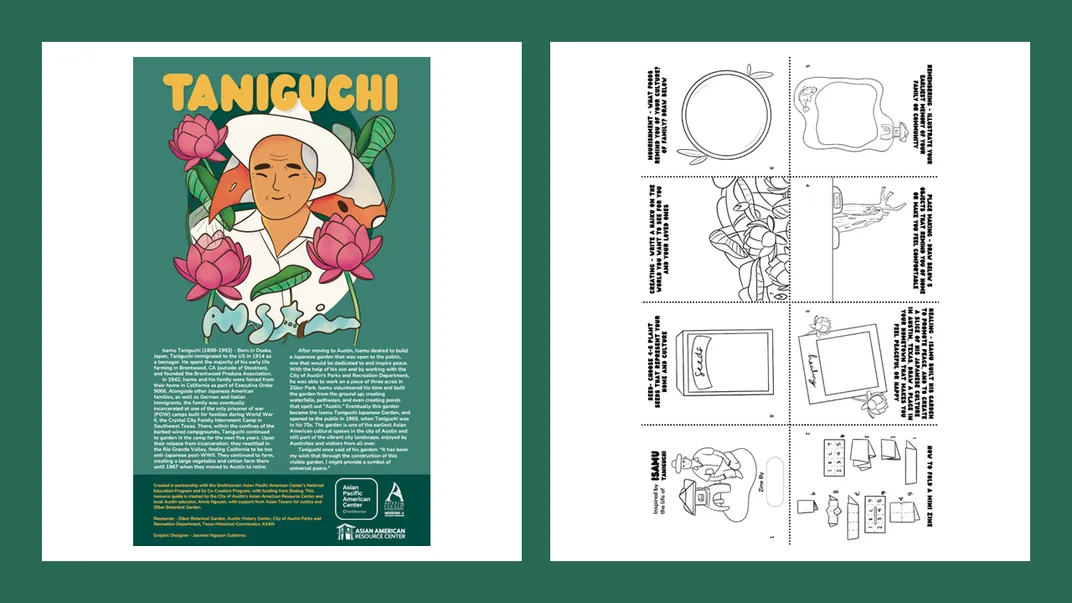
Austin's Co-Creators focused on Asian American Austinite Isamu Taniguchi, who built a garden dedicated to peace in the City of Austin’s Zilker Botanical Gardens after being incarcerated during WWII along with other Japanese Americans. Their co-created resource was a one-page informational poster with an interactive zine project on the backside. Educators and students can use the resource either as a historical informational poster to highlight one of the lesser known community leaders in Austin’s history or use the interactive zine side to guide students in reflective, critical thinking prompts that help form connections from their lived experiences to Taniguchi’s garden and larger historical themes of belonging in a creative way.
Chicago
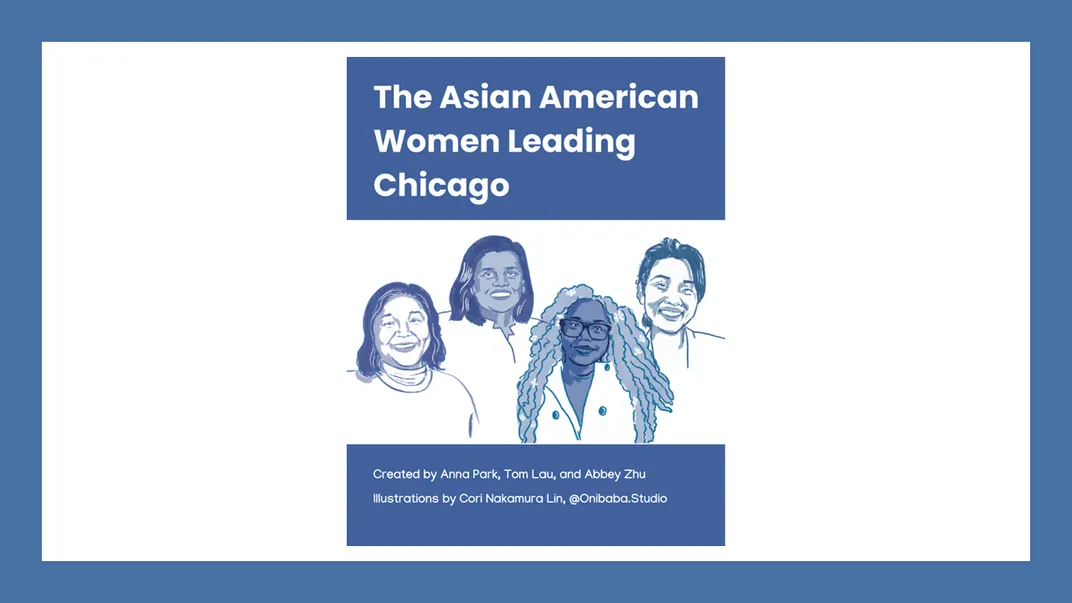
The Chicago Co-Creators spotlighted women who have led, served, and strengthened Chicago’s Asian and Asian American community. They interviewed community leaders on their work and the historical and political conditions that shaped both the individuals and the organizations they lead. These interviews are paired with accompanying discussion questions in an informational booklet. By using this resource, educators and students can better understand the specific needs and experiences of Chicago Asian and Asian American community members while connecting their experiences to larger narratives of belonging, civic engagement, community activism, and cross-cultural solidarity.
Houston
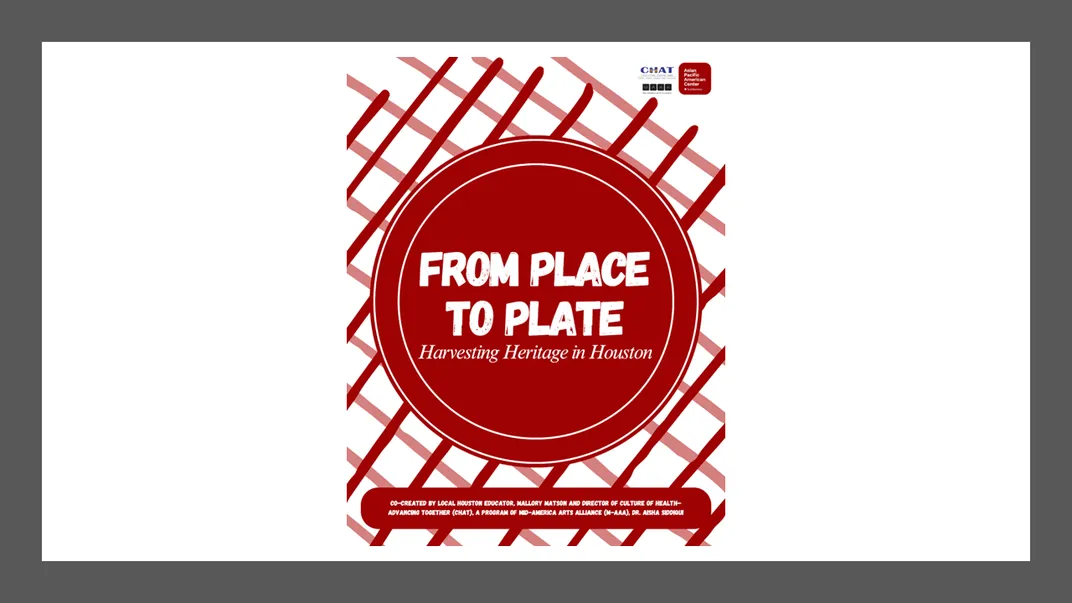
Houston's Co-Creators highlight the local stories of Asian immigrants and refugees in the Gulfton area of Houston, Texas. They focused on how local people think about, imagine, and create new relationships with food as a way to connect with their heritage no matter where they are. They co-created a booklet that includes seven recipes accompanied by personal stories from refugee community members in Houston and a printable activity inviting readers to write down their own memories of food and recipe cards. Educators and students can use this resource in a variety of settings, such as writing personal narratives or understanding fractions through recipes.
Orange County
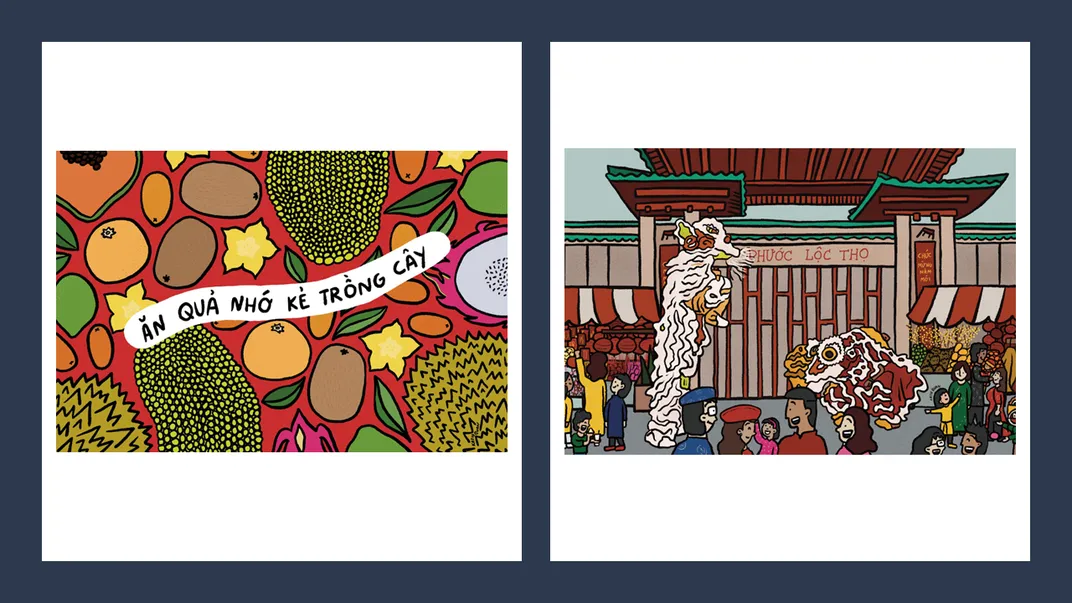
The Orange County Co-Creators developed two postcards with accompanying lesson plans highlighting Vietnamese Americans’ impact in the local community. These postcards and lesson plans introduce audiences to the Vietnamese saying Ăn Quả Nhớ Kẻ Trồng Cây ("When eating fruit, remember who planted the tree") and the Asian Garden Mall, "Phước Lộc Thọ." The postcards encourage audiences to engage in intergenerational dialogue and celebrate the legacy of the Vietnamese American community in Orange County. Additionally, this resource can also be used to help teach students how to mail a letter or postcard. The Co-Create Initiative enabled these Co-Creators to launch the Community History Postcard Project to include other AANHPI communities around the country.
San Antonio
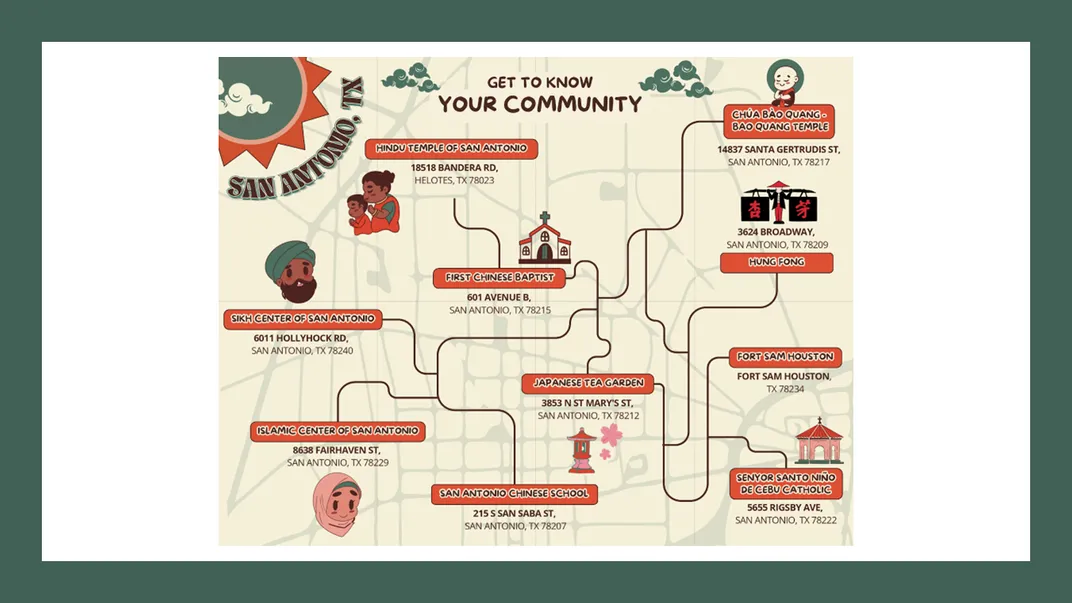
San Antonio's Co-Creators developed a map that highlights how past and present Asian and Asian American communities have shaped and continue to shape San Antonio. The map illustrates the common threads of migration and community building through local landmarks, timelines, and census data. They want this resource to empower young Asian San Antonians to see themselves as an integral part of Texas and American history. This resource offers educators a variety of entry points to begin conversations about local AANHPI histories, such as researching local landmarks and using census data to show trends overtime.
Seattle
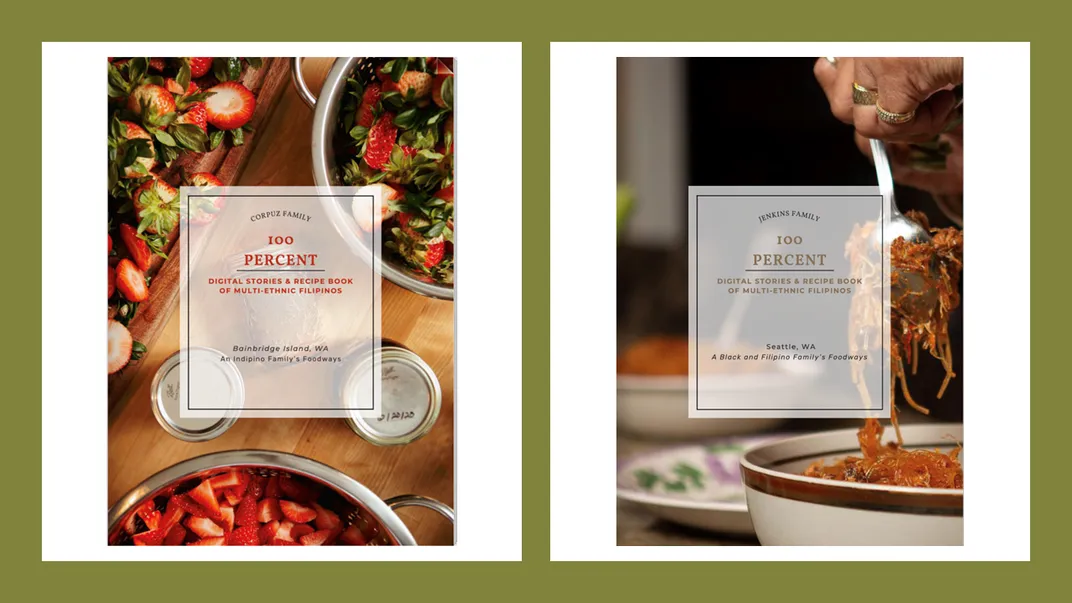
The Seattle Co-Creators developed two interactive digital cookbook zines, each in collaboration with two influential and historic multi-ethnic Filipino families: the Corpuz Family and the Jenkins Family. Through historical research, oral histories, family trees, family photographs, and celebrated family recipes, these zines present a personal history of how these families lived in Washington state. The zines begin a conversation of how these families' histories connect with larger conversations of global and American history. The cookbooks also include discussion questions and a family tree and family banquet activity where students can research and reflect on their own family histories and understand how they’re connected to larger historical events.
/https://tf-cmsv2-smithsonianmag-media.s3.amazonaws.com/filer_public/80/5d/805d698a-f7a4-4d41-bb57-a056966e4dbd/2apacsept.png)
Our Co-Creators have already begun to activate these resources. The Austin Team’s Taniguchi Zine was introduced and demonstrated at the Asian American Studies Academy, a professional development training for K-12 teachers to develop a greater understanding of Asian American history and experiences, with a focus on Texas Asian American history. Other Co-Creators are planning to utilize their resources in upcoming educational training, curriculum development, and community outreach events in their areas. While these resources illuminate just a handful of local AANHPI histories, there are so many more to teach. Which is why APAC is excited to be hosting another Co-Create Initiative Cohort in 2025 through 2026. You can keep up to date with APAC and our Co-Create Initiative by signing up for our newsletter at the bottom of our website!
Resources were created in partnership with the Smithsonian Asian Pacific American Center’s National Education Program and its Co-Creation Initiative, with past funding from Boeing and future support from the Panda CommUnity Fund.
Editor's Note: The author presented on this project at the 2024 Smithsonian National Education Summit with collaborators Freda Lin and Cathlin Goulding of the YURI Education Project and classroom educator Annie Nguyen. The archived recording is now available for replay.
